Why would you use different lighting?
The use of different lighting techniques can help emphasize various parts of a scene, from the look of location, atmosphere down to how a character feels. Lighting is arguably one of the 3 key factors to creating a great image. (Indepthcine, 2024) Lighting is also one of the fundamentals of filmmaking, without the ability to produce a visible image how can you tell a story.
Example of different lighting techniques
- Three point lighting – The technique uses, as the name implies, three different lights to help achieve a cinematic and professional image. To achieve this technique the lights required are:
- Key light– This light will act as the main source of light for the scene. Giving the location general light. This light would typically be placed slightly off to the side of the camera, in front of the talent and on a 45 angle. The light setup in this way it creates a harsh shadow on the unexposed part of the talent. This gives the scene added depth and helps to add some tone and mood to the shot.
- Fill light – Typically this light softer than the harsher, more intense key light. The fill light is aiming to light up the subject on the opposite direction to the key light. To fill in any dark or harsh shadows, helping to soften shadows. The fill light doesn’t necessarily have to be a light, it can be a reflector, a bounce light or even a wall. (Masterclass, 2021)
- Backlight/rimlight/hairlight – The third lighting source is, the backlight, this typically lights up the back of the subject. Leaving a haloing effect around the subject.
- High key lighting – This technique involves the use of multiple lights, to help bring out lighter tones of a scene. Helping to create a softer image that lightens the mood of the scene.
- Low key lighting – This technique is reliant upon the minimal use of natural light or a dark location. Utilizing, added lights or motivated lighting as opposed to natural lighting. The aim for this lighting technique is to help separate the talent from the background. This gives the scene a sense of urgency and concern.
- Natural Lighting – This technique is reliant upon the light provided by the location of a scene. The light is modified by the use of bounce boards and the time of day you chose to film. The most aesthetically and cinematic time of day is best known as ‘Golden hour’, also known as sunset. (Weido.com, 2022)
- Motivated lighting – Motivated lighting is the lighting technique that utilizes controlled lighting, aiming to imitate the original light source from a scene.
Lighting Technique Used
The lighting techniques applied to the live broadcast was a mixture of standard studio lighting and modified version of high-key lighting. We relied on the use of the RGB and regular ceiling lights, with the additions of two 2 spot lights and one panel light. The two spot lights were used to allow for a cleaner chroma key when using the greenscreen. The panel light used acted as the key light, this helped to add depth to the host. Unfortunately due the use of the two spot lights the key light did not make a significant visual difference.
We used a mix of both standard TV studio lighting and high key lighting as we found that it lent to the most visually appealing image, when viewing the broadcast from the monitoring screens. As a team Jake, Ash and I used standard studio lighting as that is what is the most common style of lighting for studio settings.
Evidence
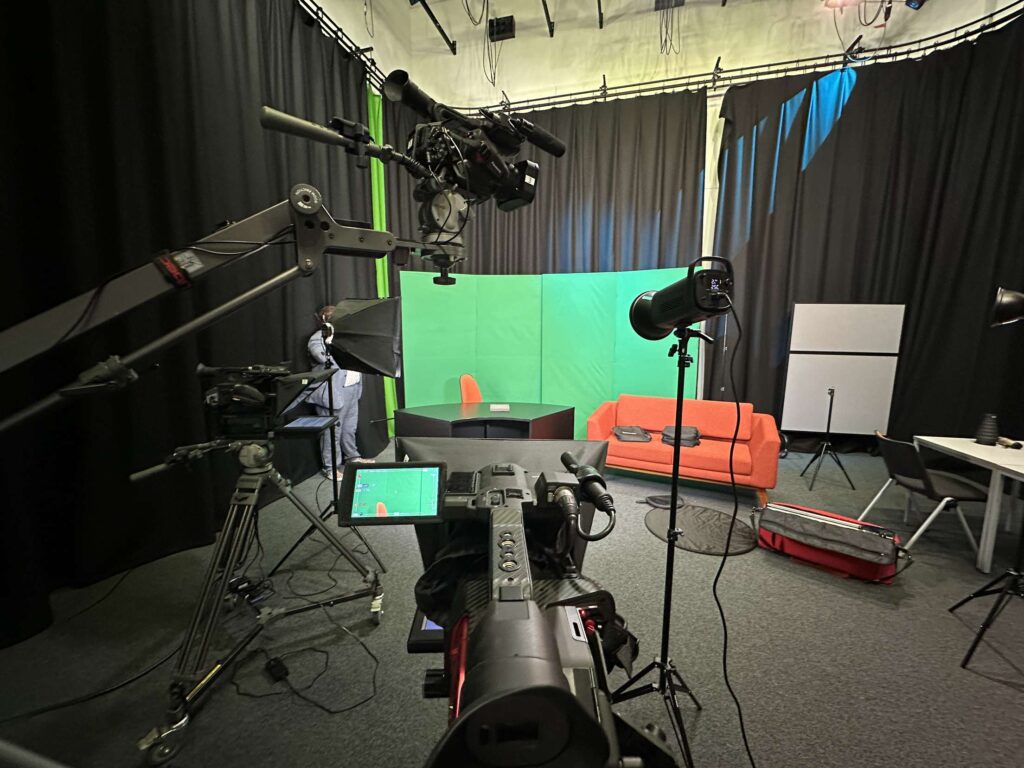
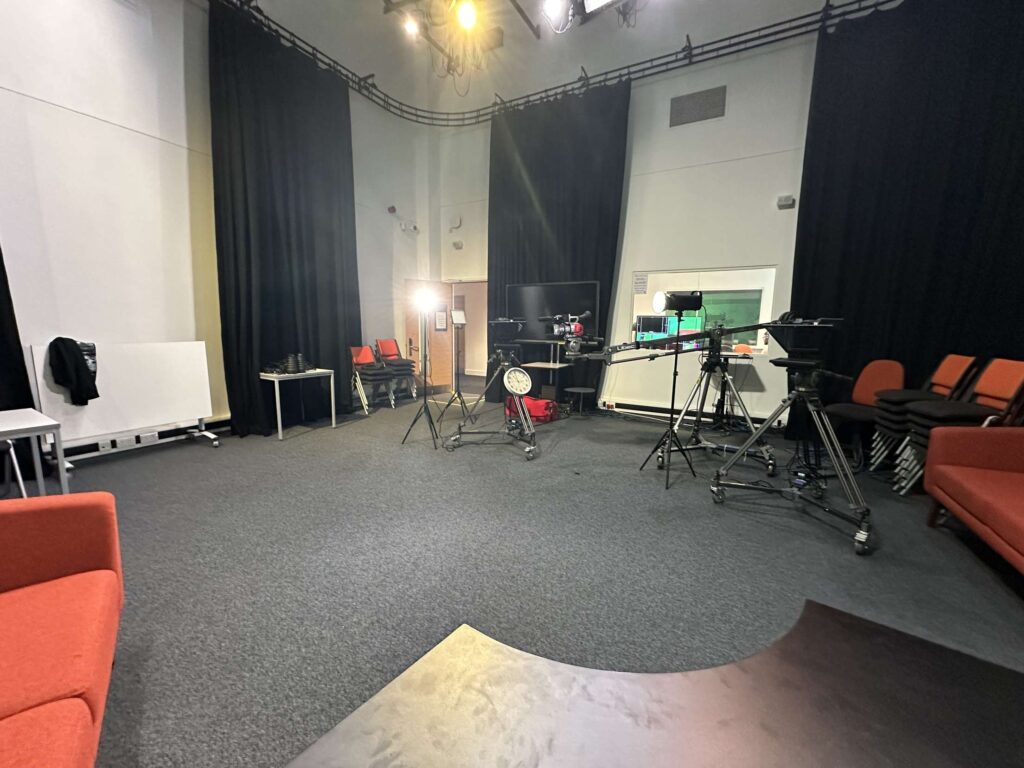
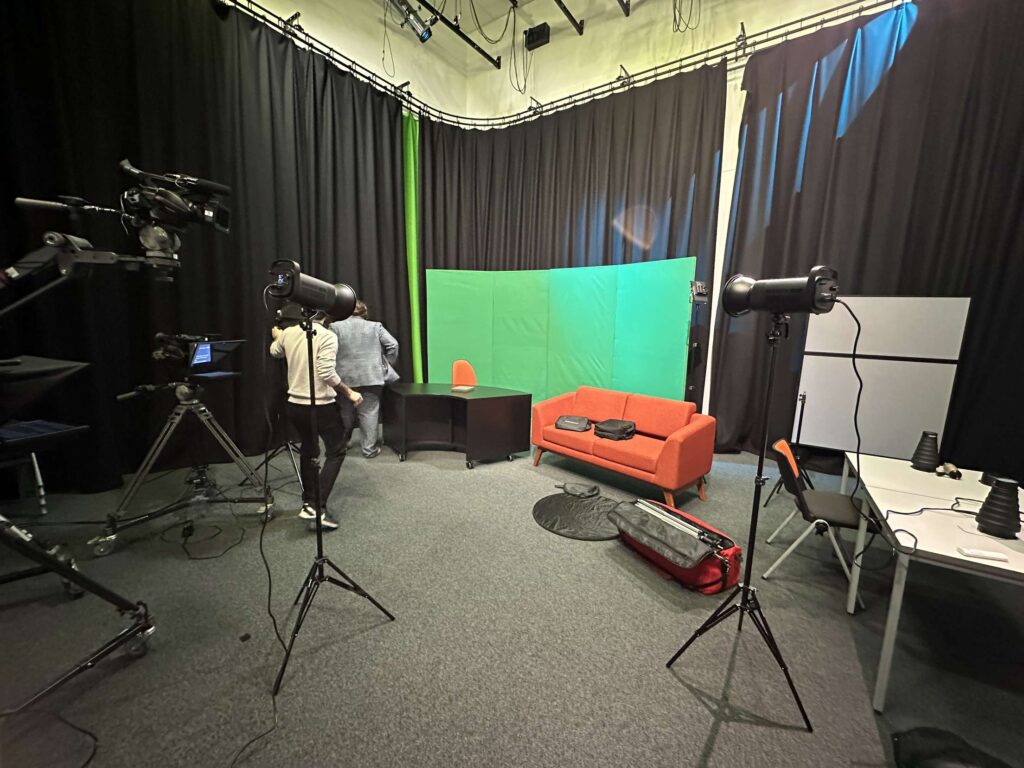
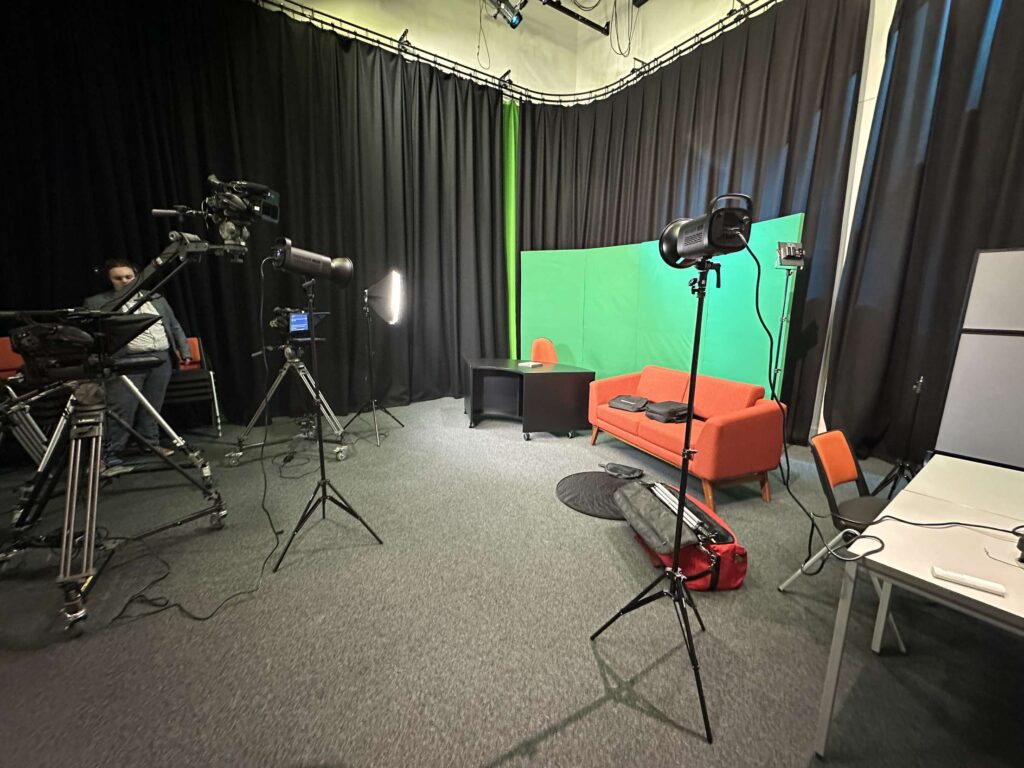

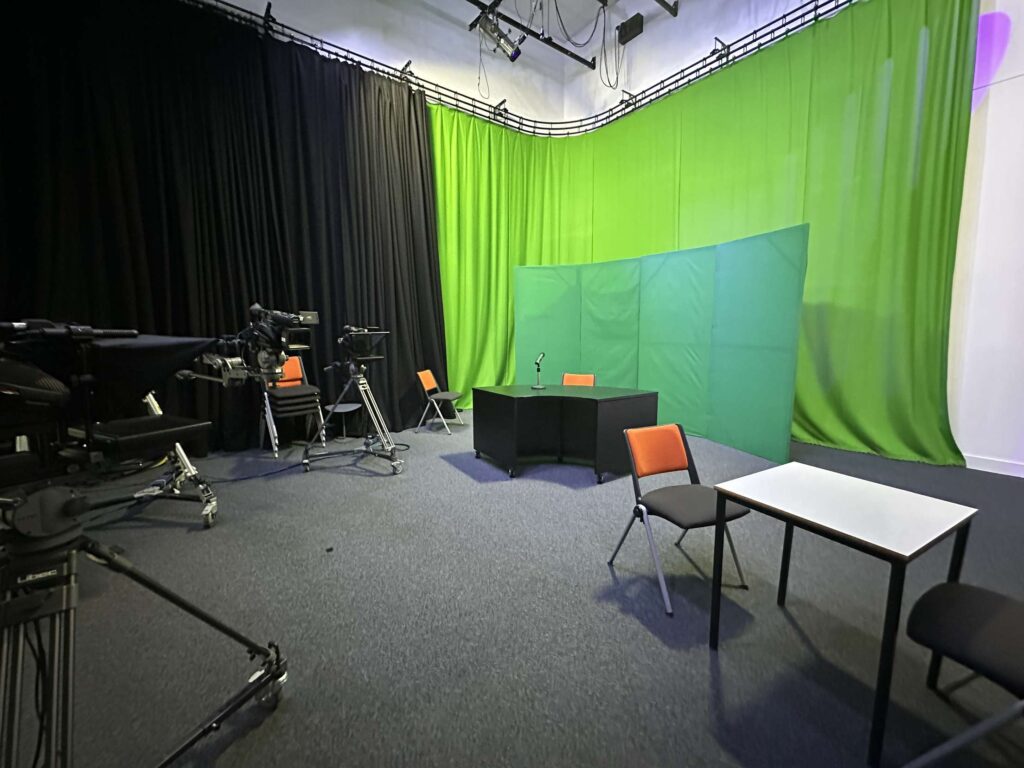
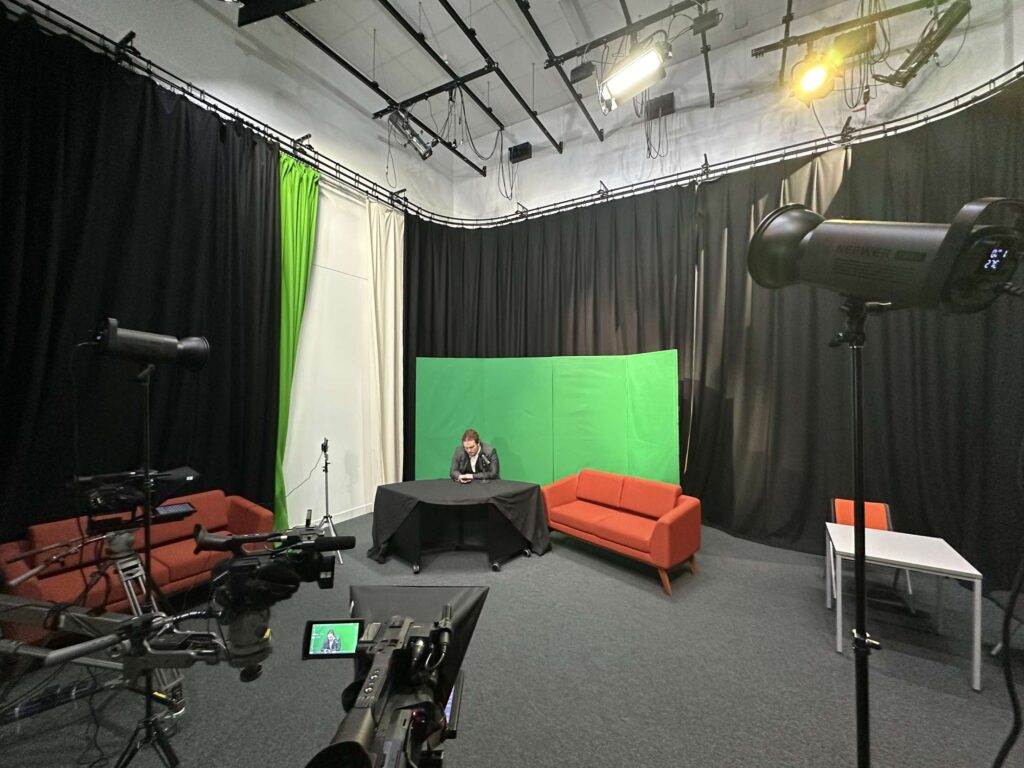
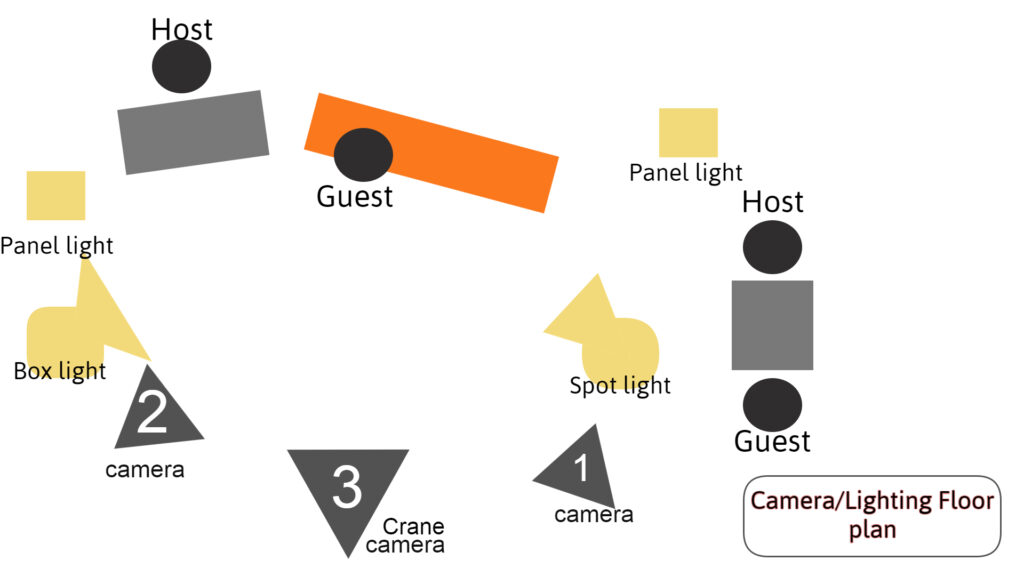
Final Product
Bibliography
Deguzman, K (2022) What is Low Key Lighting — Definition, Examples in Photo & Film. Available at: https://www.studiobinder.com/blog/what-is-low-key-lighting-definition/ (Accessed at: 07/05/2024)
Indephtcine (2024) 3 Basics of Cinematography. Available at: https://www.indepthcine.com/videos/the-3-basics-of-cinematography (Accessed at: 05/05/2024)
Masterclass (2021) Film 101: Understanding Film Lighting. Available at: https://www.indepthcine.com/videos/the-3-basics-of-cinematography (Accessed at: 05/05/2024)
Masterclass (2021) What Is Three-Point Lighting? Learn About the Lighting Technique and Tips For the Best Three-Point Lighting Setups. Available at: https://www.masterclass.com/articles/what-is-three-point-lighting-learn-about-the-lighting-technique-and-tips-for-the-best-three-point-lighting-setups (Accessed at: 05/05/2024)
Weido.com (2022) Natural Lighting: What It Does & How You Can Use It Advantageously. Available at: https://academy.wedio.com/uk/natural-lighting-in-film-2/ (Accessed at: 13/05/2024)
